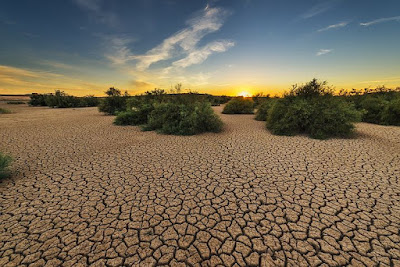Soil types have been classify by soil scientists by various systems, but many of these are specified to certain regions and geographical hit A broader Grouping, which was one of the first used, was divide Soils into zonal, a zonal and interzonal categories. A zonal soil is a mature, typical soil of any given region, produced as a result of the environment in which it
occurs.
An a zonal soil is a relatively immature soil which does not relate to its environment and intrazonal soils are those which are found in more than one zone, they can include soils which have not developed as a result of environmental factors due to the presence of a single condition such as impeded drainage e.g- marshes and swamps.SAVANNA ZONE SOILS
Many of these soils occur in areas where the rainfall is less than 110 cm per annum and often in the region of 45—100 cm. The loss of water from the soil surface and vegetation cover, which is referred to as evaporation transpiration, may be up to 120—150 cm per annum, this occurring mainly during the dry season. Leaching of mineral reserves is very limited and therefore these soils are mainly neutral or slightly aikaline, particularly in the topsoil region, due to the accumulation
of soluble salts.
Their cation exchange rate is low due
to the lack of humus, clay and a relatively high content of sand. In dry areas, the soils may contain a fairly high level of salts, particularly those of calcium and magnesium. In extreme cases, the presence of sodium salts may limit the growth of vegetation and crops.
These soils often have ironstone or 'laterite' layers near the surface so that drainage is impeded; this also makes them unsuitable for cultivation.
Also Read:
WEST AFRICAN SOIL TYPE
The following examples are from Nigeria, but many similar types soil occur in other parts of West Africa. This classification is based on the work of H. Vine who published his descriptions in 1953 and 1954.
Zone A
This includes the savanna areas and some drier parts of the rain forest climatic zone and represents the largest soil group in the country, covering about 858 000 km3. These soils are well-drained, with small areas which are badly drained and subject to leaching They have a low to medium humus content. The surface layers are slightly acid to neutral and the subsoil is generally acid.
The average rainfall varies from 50-200 cm, exceptionally to 250 cm per annum. The colour of the older soils is generally red-brown, more recently formed soils may be less red. This zone is divided into three sojl groups, each group being further sub-divided.
i, Occurs mainly in northern Nigeria, loose sandy soils, orange-brown to red in colour, subsoil loose with some clay content, red to orange-brown often more than 1.3 m in depth. Upper layers loose, well-drained, often planted with groundnuts, guinea corn, cowpea and millet.
ii, Compact, silty hne sandy loams red-brown to grey- brown in colour; in the Zaria soil group, often found on hilly areas, the topsoil extends to 2-5 m in depth Subsoil brown-red to yellow-brown sandy loam.
These soils produce guinea corn, millet and cotton in northern Nigeria. The surface tends to become hard and compact.
iii, Porous sands, lacking in structure, to sandy clays which are mainly red in colour. This soil group 1s the largest in Nigeria and includes the guinea savanna and parts of the drier rain forest areas, including the cocoa- producing areas of western Nigeria.
Zone B
These soils are mainly found in the humid, tropical forest areas of the southern parts of Nigeria. They are well-drained, sometimes highly leached and small areas of badly-drained soils occur in some parts. They are yellow-brown in colour and vary from porous sands to sandy clays. The sandy clay areas occur mostly in the south of Calabar and Ondo areas.
The soils around Oyo are mainly clay loam in texture and are more productive than the clay sands.
Zone C
These are the swamp soils, mixed with small areas of low-lying, dry land soils. The sometimes slightly brackish or salty mangrove swamps and fresh-water Swamp areas are typical of some of the areas of southern Nigeria. Two main groups have been defined.
I, Soils mainly of grey to white sand, grey clays and sandy clays with a fairly high content of humus in the topsoil. These are fresh-water areas.
II, Brown to black mangrove soils, brackish, often With a mass of roots in the upper horizons.
Zone D
These are the sands and clays in the north east area of Bornu. They are grey to black plastic clays, badly- drained or may be fHooded during scasonal rains to form the Fadama areas. They are lo0Se, pale, grey- brown sands and clays which are alluvial in origin and may be from 1.3-2 m in depth. The clay becomes sticky and impervious to water during the rains, but shrinks a great deal in the dry season, forming wide cracks and becoming very hard. They are normally lacking in calcium and tend to be acidic in nature.


